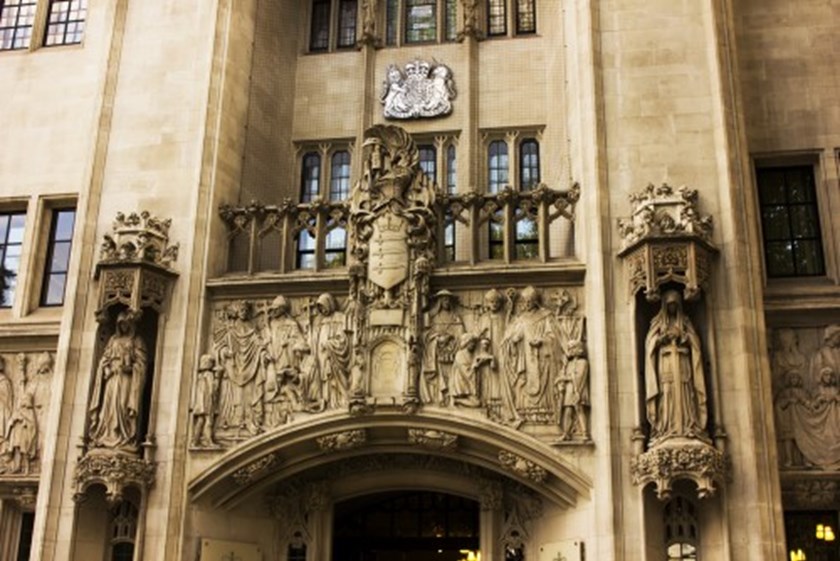What is and is not a "business" for VAT purposes?
Insight

On 1 June 2022, HMRC issued Brief 10 / 2022 announcing a change of policy for determining whether an activity is, or is not, a “business” activity for VAT purposes. In conjunction with the brief, new pages were added to HMRC’s guidance in its VAT Business/Non-Business Manual.
For a charity, the distinction between business and non-business activity for VAT purposes is key for two main reasons: first, to determine whether the charity is required to register for VAT and charge VAT on fees generated by its activities; and secondly, to assess eligibility for VAT zero rating, should the charity undertake construction of a building to be used for a “relevant charitable purpose”. It is therefore usually preferable for a charity to be regarded as not conducting business activity from a VAT perspective.
HMRC’s brief is directed not only at charities and nonprofit organisations, but also at businesses in receipt of grant funding or subsidies and those with non-business activities. As such it has wide-reaching ramifications.
HMRC’s previous policy
In the brief, HMRC explains that its previous policy was shaped by the judgments of two cases.
The first case was Morrisons Academy Boarding Houses Association [1978] STC 1 which concerned a private school. The school argued that as a charity which set its boarding fees at a cost-recovery level, it was not in business. The judge disagreed and held that the absence of profit was not determinative.
The second case was C&E Commrs v Lord Fisher [1981] STC 238. In that case, Lord Fisher ran shooting parties for his friends, and HMRC contended that he was in business and should account for VAT on the payments he received to fund the shoots. In this instance, based on a list of indicators (see the questions below), the court decided there was no business. The following six questions, expounded in the Fisher case, were adopted by HMRC as its “business test”:
- Is the activity a “serious undertaking earnestly pursued”?
- Is the activity an occupation or function actively pursued with reasonable or recognisable continuity?
- Does the activity have a certain measure of substance as measured by the quarterly or annual value of taxable supplies made?
- Is the activity conducted in a regular manner and on sound and recognised business principles?
- Is the activity predominantly concerned with the making of taxable supplies to consumers for a consideration?
- Are taxable supplies that are being made of a kind which, subject to differences of detail, are commonly made by those who seek to profit from them?
The question of “predominant concern” (see question 5) proved to be the most challenging. Nevertheless, for a while, it played out well for charities, which were able to argue that the predominant concern of their activity was to fulfil their charitable objects, and any “commercial” aim of the activity was therefore secondary and not the “predominant concern”. Accordingly, in the cases of two charities which provided nursery and crèche facilities to the public and charged feesat (or below) cost (Yarburgh Children’s Trust v HMRC [2002] STC 207 and St Paul’s Community Project v HMRC [2005] STC 95), the courts gave weight to the predominant concern question and held that the charities were not in business.
The new policy does not abandon the Fisher tests but seeks to ensure that the overall objectives of an organisation can no longer trump a “business” motive behind a specific activity
But these cases did not address a conflict with wording in the Principal VAT Directive (PVD) (which is acknowledged by HMRC in its VAT Business/Non-Business Manual at VBNB22000). The predominant concern question asks what the motivation is for the supplies. This does not sit easily with article 9 of the PVD which ignores motivation and defines a “taxable person” as a person who carries out any economic activity, whatever the purpose or results of that activity. Hence the judgments in cases reaching the European Court tended towards a more purist approach to identifying business supplies, leaving aside questions of motive, in keeping with the PVD.
The formulation of a new policy
The case of Longridge on the Thames v HMRC [2016] EWCA Civ 930 heralded a change in the UK courts’ approach to the business/non-business definition, bringing it more closely in line with the European approach.
Longridge was a charity which charged fees for providing water-based and outdoor activities. As Longridge received donations and benefited from volunteers in its workforce, it was able to set fees at below cost and to adjust them according to users’ ability to pay. HMRC successfully argued that the Fisher criteria (including the predominant concern consideration) could not override the principle laid down by the European Court (particularly in the cases of European Commission v Finland [2009] ECR I-10605 and Wellcome Trust Ltd v C&E Commers [1996] ECR I-3013) that an activity is an economic activity (ie a business) where there is a “direct and immediate link” between the services or goods supplied and the payment received by the supplier, a matter which was to be assessed objectively.
This argument was further developed in Wakefield College v HMRC [2018] EWCA Civ 952. Wakefield provided higher education and its fees were subsidised by grant awards which enabled the college to keep the prices of its courses at a fixed low level. The Court of Appeal held that whether there is a supply for consideration and whether that supply constitutes an economic (ie business) activity are separate questions and that a supply for consideration is a necessary but not sufficient condition for an economic activity. In consequence, a new two-stage test was espoused, as follows:
- Stage one: Does the activity result in a supply of goods or services for consideration, ie is there a direct link between the supply and the payment?
- Stage two: Are the goods or services provided to obtain “remuneration”? In this context, “remuneration” is taken to mean income obtained on a continuing basis. If the answers to both questions are both “yes”, then the activity will be a business activity.
The route to answering the stage one question is addressed in pre-existing HMRC guidance, including for grant funded organisations (see HMRC’s VAT Supply and Consideration Manual at VATSC06317). HMRC has produced new guidance on how to interpret the two-stage test (at VBNB30300 and VBNB30200), which uses the following questions:
- Is a purpose of the consideration to create income? Examples of activities which would not have this purpose are where: a charge is made solely in order to create a binding contract (eg a peppercorn rent) or as an indication of commitment; to ensure that the number of participators in the activity is controlled (eg a participation fee); the activity is of a governmental or regulatory nature; or there is no potential commercial competition for the goods or services in question.
- Is there an intention to make a profit? While an intention to create a profit is a strong indicator that the activity is intended to generate income, HMRC states that the reverse is not true.
- Is the payment so low as to be a concession? HMRC considers that a charge made at a significant discount may show the activity is not for the purpose of obtaining income.
- Is the activity conducted on sound business principles? HMRC views this criterion as “useful” in distinguishing a business activity from a “private” one (ie a hobby).
- What is the scale of the activity? A low turnover will indicate that the activity is not intended to create income.
The brief concludes with a few short statements, summarised as follows:
- A business activity is possible even in the absence of a profit motive.
- In light of Longridge and Wakefield, the Fisher questions will no longer be used as the business test and the twostage test as set out in Wakefield will be adopted.
- The Fisher questions can still be used, but only to “help identify those factors which should be considered”.
Evidently, there is overlap between the questions used in stage two of the test and the original Fisher test questions. It therefore seems that far from abandoning the old business test, HMRC intends that Fisher-type questions should continue to play a role in identifying business activity. What has changed is that these indicators can no longer override stage 1 of the test (“the direct link” requirement), as they did in Yarborough and St Paul’s. However, the process is now somewhat duplicative and arguably more convoluted as HMRC will still use Fisher test questions to “identify” the issues, and then it will ask similar questions again, to answer the stage two “remuneration” question.
What is the impact on charities?
HMRC is at pains to point out that, when considering whether an activity has the purpose of generating income, it is “not relevant” whether the supplier is a charity. This is because the overall objectives of a charity should hold no sway. Nonetheless, the stage two test does bring the “purpose” of the supply to the fore and any focus on purpose is likely to be helpful to charities. A good result for charities might be if HMRC were to interpret the stage two test as asking “which came first, obtaining remuneration or something else?” Thus, for example, one would ask:
(a) Is the charity’s initial priority to provide a particular service or goods in furtherance of its charitable aims, with a subsequent consideration being the need to find a way to fund this activity by making some level of charge?, or
(b) Is the charity’s initial priority to create income, with the route to achieving that income stream an ensuing consideration?
Situation (a) would point towards a non-business activity, whereas situation (b) would indicate a business activity.
Remaining uncertainty
It appears HMRC did not consult externally before going to press, and the new brief has raised questions among tax professionals. Does the new policy take effect from 1 June 2022? There is no statement to this effect in the brief. It is not clear whether the brief is a formal replacement to Brief 2/2005 in which HMRC confirmed that the provision of nursery and crèche facilities by a charity in similar fashion to Yarburgh and St Paul’s would not be a business activity. It is unhelpful that HMRC has not (yet) withdrawn statements expounding the old policy (for example, in its guidance for educational supplies in VAT Education Manual at VATEDU36900) or made more efforts to integrate the new policy into other areas of HMRC guidance (such as Notice 701/1).
The brief also misses an opportunity to comment on cases decided after Wakefield that considered the business test, such as Colchester Institute Corporation v HMRC [2020] UKUT 368 (TCC), Glasgow School of Art v HMRC [2019] UKUT 173 (TCC) and Yeshivas Lubavitch Manchester v HMRC [2019] UKFTT 427 (TC).
Final thoughts
Overall, the update to HMRC’s policy is useful as it more closely reflects the more recent cases. The new policy does not abandon the Fisher tests but seeks to ensure that the overall objectives of an organisation can no longer trump a “business” motive behind a specific activity. Of course, the brief and the related guidance are only pieces of the puzzle, particularly as they do not bind HMRC. It will remain necessary to consider, in each instance, the latest VAT cases before taking a view on business activity. Whether the UK courts will continue to tow the European line and keep closely to the wording of the VAT Directive is something that only time will tell, given their post-Brexit freedom to diverge.
Please note this content was originally published by Tax Journal see here.
This publication is a general summary of the law. It should not replace legal advice tailored to your specific circumstances.
© Farrer & Co LLP, August 2022



